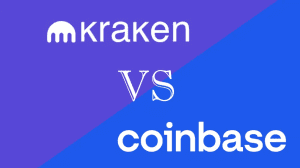What Are Liquidity Pools? Beginner’s Guide

Liquidity pools have become a popular topic in the world of cryptocurrency and DeFi (decentralized finance) over the years. These pools provide a way for traders to swap tokens without relying on a centralized exchange, and they are an essential component of many DeFi platforms.
In this article, we’ll dive into what liquidity pools are, how they work, and why they are essential for the DeFi ecosystem.
The Liquidity Pool Summary
Here are the key takes from this guide.
- A liquidity pool is a smart contract that contains a large volume of cryptos.
- It facilitates trading without the need for centralized exchanges.
- These pools use Automated Market Making (AMM) to set the price of each token.
- Some perks also include more income, greater liquidity, and less slippage.
- However, they are complex to use and subject to price fluctuations and market risk.
Liquidity Pools – What Are They And How They Work
A liquidity pool contains large portions of tokens, cryptocurrencies, digital assets, or virtual coins locked into a smart contract. Traders can use these tokens to facilitate trades between different assets without relying on a centralized exchange.
Liquidity pools collect assets through liquidity providers, or LPs, who contribute to a percentage of the crypto in a typical liquidity pool smart contract. LPs earn a portion of the trading fees for providing liquidity to the pool, and the tokens are available for trading or redeeming.
Furthermore, Liquidity pools use a concept called Automated Market Making (AMM) to determine the price of each token. When traders want to buy a digital asset from the pool, they pay with another coin. Then, the smart contract automatically calculates the appropriate price based on the current ratio of crypto in the pool.
For example, imagine a liquidity pool that contains ETH and DAI tokens. Let’s say the pool currently has 100 ETH and 10,000 DAI. The price of ETH in terms of DAI would be calculated by dividing the total value of ETH by the full value of DAI in the pool. If the total worth of ETH is $200,000, and the total value of DAI is $10,000, then the price of ETH in terms of DAI would be 20.
Why Are Liquidity Pools Important For DeFi?
Liquidity pools are a critical component of DeFi because they allow traders to swap tokens without relying on a centralized exchange. This decentralized trading model is more secure and less prone to hacking or other forms of manipulation. It also allows for greater liquidity, as anyone can contribute tokens to the pool and earn fees.
Additionally, liquidity pools are a vital building block for other DeFi applications, such as lending protocols. By providing liquidity to these protocols, users can earn interest on their tokens and contribute to the growth of the DeFi ecosystem.
Liquidity Pool Pros And Cons
While there are many benefits to using liquidity pools, there are also some potential drawbacks.
Advantages
- Decentralization: Liquidity pools are based on smart contracts and are, therefore, decentralized. This means that they are less prone to hacking or other forms of manipulation that can occur on centralized exchanges.
- Greater liquidity: Liquidity pools enable greater liquidity for less commonly traded assets. Since anyone can contribute tokens to a liquidity pool, it creates a decentralized market for buying and selling assets that might not have enough liquidity on centralized exchanges.
- Passive income: Liquidity providers can earn a percentage of the trading fees generated by the pool. Thus, it can be a lucrative source of passive income for those with significant amounts of capital to contribute.
- Reduced slippage: A liquidity pool can help reduce slippage when trading assets. Slippage refers to the difference between the expected price of an asset and the actual price at the time of the trade. Since liquidity pools have a constant product formula determining the exchange rate, slippage can be minimized.
Disadvantages
- Impermanent loss: One potential drawback of liquidity pools is impermanent loss. It occurs when the price of one asset changes significantly relative to the other asset. Liquidity providers may experience losses when they withdraw their tokens from the pool.
- Price fluctuations: Liquidity pools are subject to price fluctuations like any other financial instrument. While the constant product formula can help reduce slippage, it does not completely eliminate the risk of price fluctuations.
- Technical complexity: Liquidity pools can be technically complex for novice users. Interacting with a liquidity pool requires some understanding of smart contracts, which can be intimidating for those without a technical background.
- Market risk: Liquidity pools are also subject to market risk. If the market moves against a particular asset in the pool, liquidity providers may experience losses.
Liquidity Pools Vs. Order Books
When it comes to trading cryptocurrencies, there are two primary mechanisms used to match buyers and sellers: liquidity pools and order books.
Order books have been the traditional way of matching buyers and sellers in financial markets for decades. They work by allowing buyers and sellers to place orders at different price levels, with the matching algorithm finding the best possible match. Order books offer several advantages over liquidity pools, including:
- Greater price transparency: Order books offer greater price transparency than liquidity pools, allowing traders to see identical bids and ask for a particular asset.
- Customizability: Traders can set their own prices for buying and selling assets, giving them more control over their trades.
- No impermanent loss: Order books do not suffer from impermanent loss, which can be a significant risk in liquidity pools.
- Greater liquidity for large trades: Traders can place orders for large amounts of an asset without affecting the price.
FAQ
Do you have more questions about liquidity pools? You’ll find all the answers you need below.
What is a liquidity pool?
A liquidity pool is a pool of tokens that traders can trade against in a decentralized exchange. The pool is created by liquidity providers who deposit tokens into the pool in exchange for a share of the trading fees generated by the pool.
What is impermanent loss?
Impermanent loss is a risk associated with liquidity pools. It occurs when the price of the assets in the pool changes relative to each other, causing the value of the liquidity provider’s shares to decrease. You can reduce impermanent loss by choosing tokens with similar prices and using tools like hedging.
What are some popular liquidity pool providers?
Some popular liquidity pool providers include Uniswap, SushiSwap, Curve, Balancer, and Bancor.
How do I become a liquidity provider?
To become a liquidity provider, you must deposit tokens into a liquidity pool. In exchange, you’ll receive a share of the trading fees generated by the pool.
What are the benefits and risks of liquidity pools?
A liquidity pool offers several benefits, including lower fees, greater liquidity, and reduced slippage. It also allows traders to trade less commonly known assets that are difficult to buy or sell on traditional exchanges. Meanwhile, some main risks include impermanent loss, smart contract risks, and market volatility. It’s essential to carefully consider these risks before investing in a liquidity pool.
Concluding The Liquidity Pool Guide
Liquidity pools are a fundamental component of the DeFi ecosystem, providing a secure and decentralized way for traders to swap tokens without relying on a centralized exchange. By using Automated Market Making, liquidity pools can determine the price of each token in the pool and facilitate trades between users. As DeFi continues to grow and evolve, liquidity pools will remain a critical component of this exciting new financial ecosystem.
Crypto trading (trading in general, actually) is always a risky business because the industry is volatile. Therefore, make smart choices and don’t invest more than you can afford to lose.






1 thought on “What Are Liquidity Pools? Beginner’s Guide”